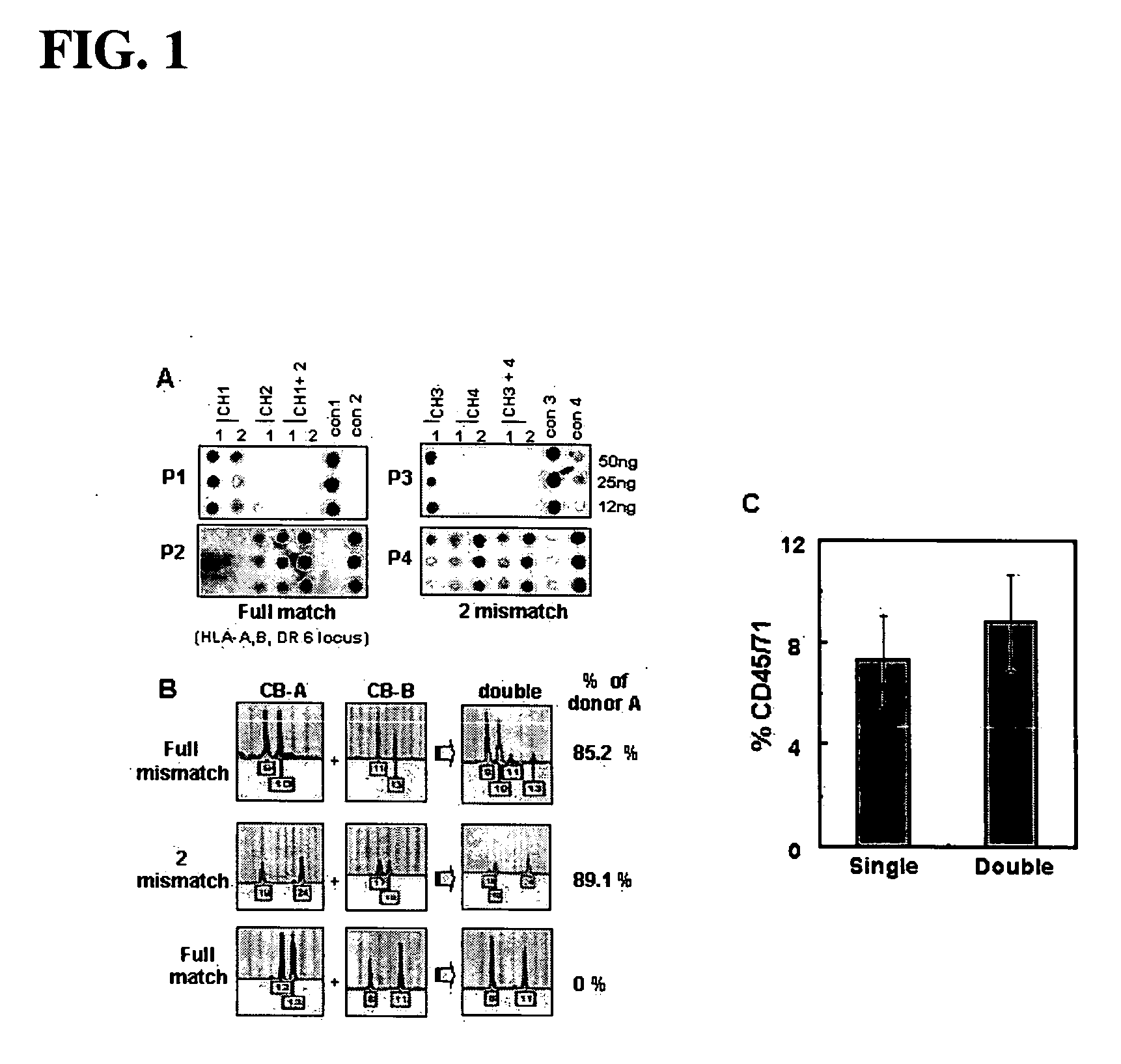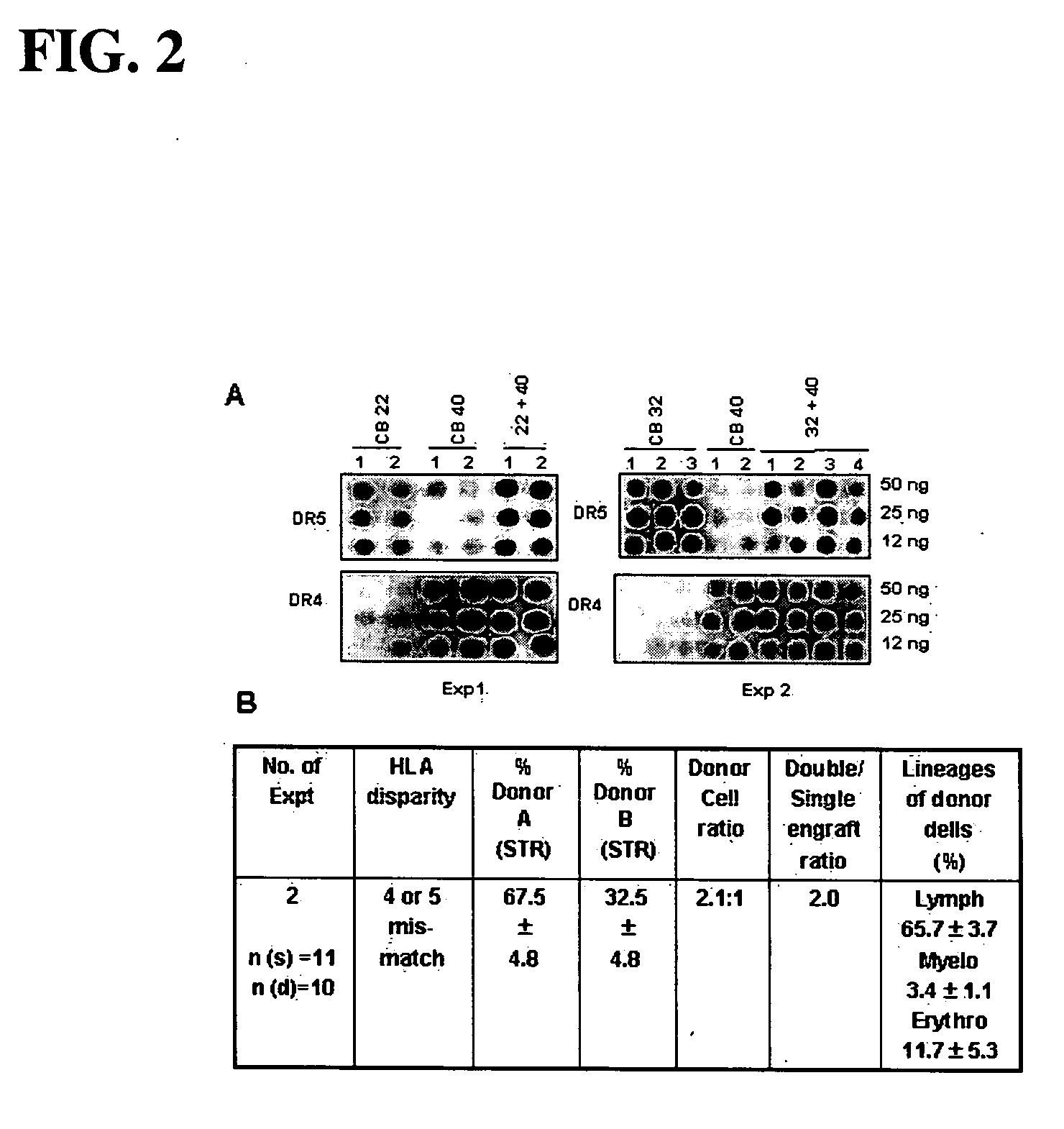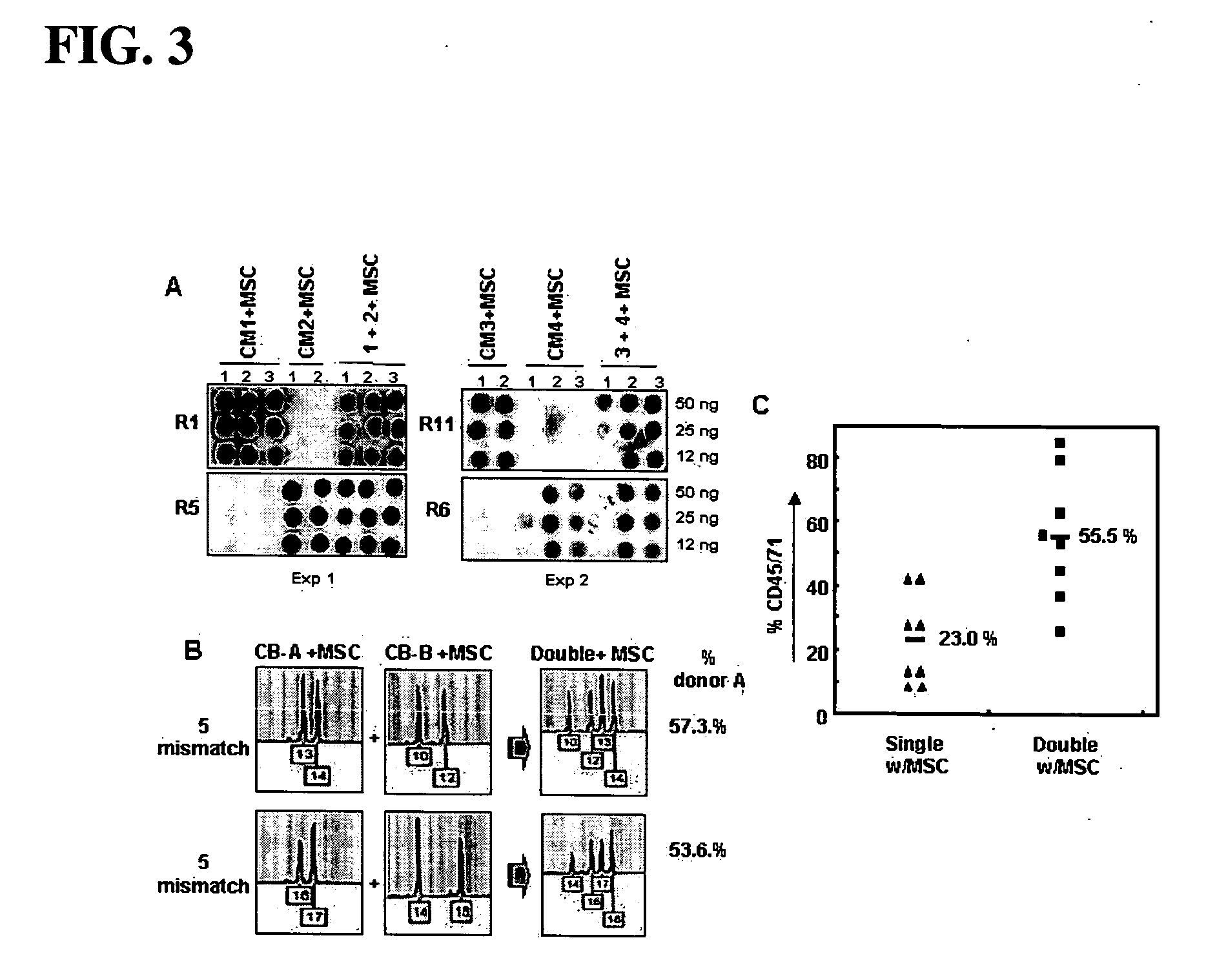Method of using mesenchymal stromal cells to increase engraftment
a technology of mesenchymal stromal cells and stromal cells, which is applied in the field of increasing engraftment by using mesenchymal stromal cells, can solve the problems of difficult to address this issue in clinical trials and higher overall engraftment, and achieves the effect of increasing the overall engraftment level
- Summary
- Abstract
- Description
- Claims
- Application Information
AI Technical Summary
Benefits of technology
Problems solved by technology
Method used
Image
Examples
example 1
Materials and Methods
[0082] Cells
[0083] Informed consent was obtained prior to collection of all cellular products. Low-density (1.077 g / mL) cells were isolated by Ficoll-Hypaque density centrifugation (Amersham Pharmarcia, Uppsala, Sweden) from normal cord blood samples, and cryopreserved in medium containing dimethyl sulfoxide. In some experiments, low-density cord blood cells were obtained from the buffy coats that had been cryopreserved for allogenic cord blood banking (Histostem Corp, Seoul, Korea). In all cases, HLA typing was performed by genetic typing of the HLA-A, B, and DR loci 24. For lineage depletion of cord blood cells, cryopreserved light-density cells were thawed and mature lineage-positive (lin+) cells (CD2, CD3, CD14, CD16, CD19, CD24, CD36, CD38, CD45RA, CD56, CD66b, and glycophorin A) were depleted using an immunomagnetic column (StemCell Technologies, Vancouver, BC, Canada).
[0084] Mesenchymal stromal cells (MSCs) were obtained from normal donor bone marrow b...
example 2
Results
[0095] Mixed Transplantation of Total Nucleated Cells Leads to One-Donor Predominance Independent of Input CRU Content or Degree of HLA Mismatch.
[0096] Light density total mononuclear cells (MNC) from pairs of UCB units having differing degrees of HLA-disparity were prepared from previously HLA-screened UCB pools and transplanted into NOD / SCID mice alone (control) or as a mixture. The percentage of CD34+ cells in these pools ranged between 0.2% and 1.0% (mean 0.6%). Although approximately 30% of mice died during the first 2 to 3 weeks after transplantation, no signs of GVHD such as shivering, hair loss, or gut necrosis 33,34 were observed. Mice were sacrificed 6 weeks after transplantation and analyzed for human cell engraftment and donor origin of the engrafted cells.
[0097] First, three cohorts of double cord transplants with either full matches in six loci (HLA-A, B, DR in each haploid), two mismatches (in HLA-B, DR) or full mismatches were analyzed with PCR-SSOP for the...
PUM
 Login to View More
Login to View More Abstract
Description
Claims
Application Information
 Login to View More
Login to View More - R&D
- Intellectual Property
- Life Sciences
- Materials
- Tech Scout
- Unparalleled Data Quality
- Higher Quality Content
- 60% Fewer Hallucinations
Browse by: Latest US Patents, China's latest patents, Technical Efficacy Thesaurus, Application Domain, Technology Topic, Popular Technical Reports.
© 2025 PatSnap. All rights reserved.Legal|Privacy policy|Modern Slavery Act Transparency Statement|Sitemap|About US| Contact US: help@patsnap.com



